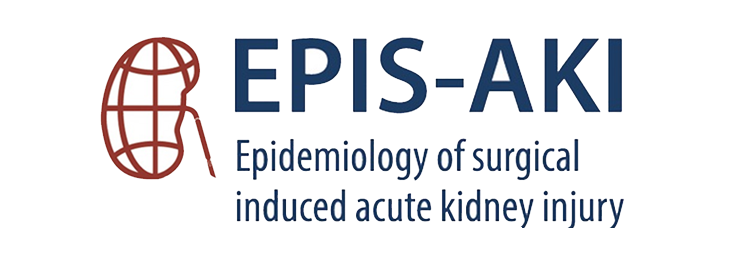Age and comorbidities of patients are increasing along with the need for therapeutic interventions. In this context acute kidney injury (AKI) is a significant complication that may have a major impact on the future course of the patient.
Many analyses have been performed to evaluate the epidemiology of AKI in different surgical settings. Since the introduction of the different classification systems, results were thought to become comparable. Most of the trials, though, are retrospective and therefore limited due to the nature of the trial design. Additionally, AKI is mainly diagnosed by the serum creatinine criterion thereby disregarding urine output. However, it has been recently shown in a general ICU patient cohort that the urine criterion is important for diagnosing and staging AKI. Consequently, the exact incidence of AKI after extended surgical procedures is currently unknown. Furthermore records show that 57-75.6% of cases are not diagnosed by the treating staff.
After abdominal surgery, the occurrence rate of AKI ranges from 1.8-39.3%. Recent studies on the incidence of AKI after cardiac surgery demonstrate a range in the AKI incidence from 3.1% to 39.9%. Hoste et al., though, recently performed a large prospective observational multinational trial including 1802 critically ill (surgical as well as non-surgical) patients in 139 ICUs worldwide to evaluate the epidemiology of AKI. Focusing on surgical patients (n=740), the incidence of AKI according to the KDIGO criteria was 53.2% indicating a considerably higher occurrence when using the latest consensus definition and a standardized data collection instrument.
This is important information. Not only to get an overview of the disease itself and therefore its importance but to gain knowledge that allows us to draw further conclusions about the pathogenesis and a targeted approach with preventive measures.
In short, we need to know how often and under which circumstances AKI occurs during and after surgery. For this reason, we have planned the “EPIS-AKI” study.
EPIS-AKI stands for
“EPIDEMIOLOGY OF SURGICAL-INDUCED ACUTE KIDNEY INJURY”.
The objective of the Epidemiology of Surgical-induced Acute Kidney Injury (EPIS-AKI) trial is to prospectively evaluate the epidemiology of AKI after extended surgical procedures in hospitals using the latest consensus definition for AKI and a standardized data collection instrument and to assess the dependence of AKI on preoperative and intraoperative factors. EPIS-AKI is a prospective international multi-center observational study. We seek to include patients undergoing major surgery for at least 2 hours and who are admitted to an observational unit such as intensive care unit or high dependency unit to adequately address both criteria of the KDIGO definition since the assessment of urine output requires a Foley catheter. Based on the high number of included patients, we will use the data to generate new risk scores for surgical patients and for different surgical subpopulations.
To accomplish the aim of 10,000 included patients within a short time period we kindly ask for support within the members of the European Society of Anesthesiology. AKI has a high impact on health policy and the results are urgently needed for designing new pre-emptive and therapeutic trials, which is also the main goal of the RAPNet (Renal Protective Network, Initiator: Univ.-Prof. Dr. med. Alexander Zarbock). Both EPIS-AKI and RAPNet are supported by the European Society of Anesthesiology. Moreover with EPIS-AKI we hope to build up a common spirit to enhance the scientific exchange within the growing RAPNet network. The study also provides the momentum for boosting teamwork which may allow a fruitful cooperation for future investigations.
Readers interested in participating in EPIS-AKI or the RAPNet may contact us per mail epis-aki(at)ukmuenster(dot)de.

